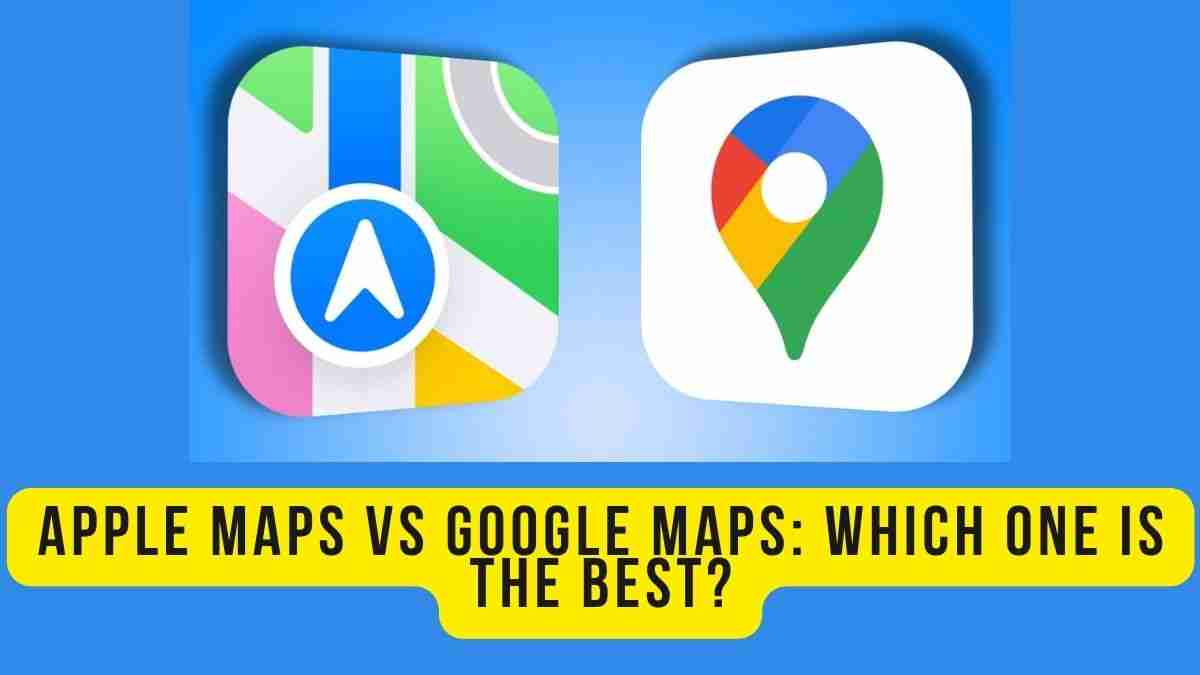Apple Maps vs Google Maps: Apple’s primary tech rival is Google’s Android handsets. Apple also competes with Android applications, such as Apple Maps versus Google Maps.
Online maps have revolutionized travel. They help us discover new places with nearby suggestions, navigate traffic jams on familiar routes, and detect when public transit ends for the night.
Each map app is distinct. iOS and Androids mapping apps have improved, but it’s hard to tell which is best.
We’ll compare Apple Maps and Google Maps to help you decide—is there a clear victor or will it come down to personal preference?
Apple Maps vs Google Maps: Precision
In iOS 6, Apple Maps debuted with inaccurately labeled maps. After years of improvements, both applications now display nearly identical accuracy levels.
Cycling routes and 3D maps on an iPad or other Apple device can be very useful, with the exception of some minor issues when searching for a road in one country and finding similar roads elsewhere.
Google Maps’ app updates quicker when a new road or local company changes its information. Due to its larger user base, it has the capacity to crowdsource and validate data faster; however, this advantage is relatively minor.
Navigtion in Car
Apple Maps vs Google Maps: When it comes to turn-by-turn navigation, both services offer identical capabilities. Both will display a moving indicator that tracks your route, showing you where the next piece of road is and providing instructions for what action should be taken next.
Both programmes will estimate your arrival time and distance, which may change while driving or if traffic patterns alter. You may report road bumps to alert other drivers of bottlenecks or road closures.
Both applications offer voice commands so you can use them while driving. However, the services are best utilized on their home platform since Siri on iPhones or Google Assistant on Android work better with the native app.
Google wins in other areas.
Before beginning your journey, consider adding pit stops. Apple can help locate gas stations or restaurants, but Google offers more. With their Maps application, you can create a single route that departs from work, passes your food shop, and then returns you home.
Google’s new route suggestions emphasize fuel economy over just speed or distance.

Public Transporation: Cycling and Walking
Apple Maps vs Google Maps: Google is better for vehicles, but what if you’re using public transportation, walking, or biking?
Both services are similar. Both Apple Maps and Google Maps provide accurate public transit information and comparable walking/cycling routes.
Again, Google Maps wins. Using crowdsourced data and historical patterns helps predict service demand. It also shows routes that “Depart at” or “Arrive by” a specified time and the latest public transport option.
In 2022’s upgrades, Apple Maps included e-bike routes (opens in new tab). E-bikes are popular with workers because they’re ecologically friendly and easier to ride. Planning several routes on your iPhone or Apple Watch Ultra for extreme bike journeys might be a big help.
Apple Maps vs Google Maps: Design
Design is inherently subjective and personal.
Apple Maps’ layout is simpler. The map is less obscured by its many features, creating a less cluttered default map. Background and roads have similar, subdued tones, while your planned routes are highlighted in blue for easy identification.
Google Maps has a vibrant look. Its streets and backdrops use greens and greys to distinguish nature from urban regions; important roadways are typically highlighted in yellow for added visibility.
Google Maps’ features are spread out. At the top, you’ll see a search bar and shortcuts for local restaurants, petrol stations, and grocery shops; at the bottom you’ll find an extensive menu with explore and donate options.
When it comes to main screens, there’s a bit of a choice between simpler or more feature-packed options; ultimately, however, we prefer Google Maps simply because it provides directions faster.
If you recently purchased an iPhone 14 or 14 Pro, there are a few design decisions to make.
Apple Maps instructions will appear on the Pro’s always-on display, allowing you to read directions, arrival time and remaining distance without unlocking your phone and draining its battery life.
Google Maps has recently added lock screen functionality to iOS 16 devices, enabling you to easily receive directions to your favorite places.
Apple Maps vs Google Maps: Privacy
Apple is the clear leader in data protection, boasting its commitment to security measures.
Apple Maps saves all personal data on your device, so you can delete it at any time. Apple has devised a method for providing precise instructions while keeping your location confidential.
Apple Maps utilizes a technology called “fuzzing” to mask your actual path. Once this data reaches a distant server, your Apple ID is no longer associated, providing you with anonymity.
Google can use your location data to sell adverts and make suggestions if you allow it. This may help identify relevant material, but it can also be disconcerting.
Incognito mode is available, though it’s not as secure as Apple’s.
Apple Maps vs Google Maps: Which one to Choose?
Google Maps is the victor for non-Apple devices.
Apple Maps won’t operate on non-Apple devices. Using an iPhone or iPad will depend on what you value most.
Google Maps is the front-runner since it’s been gathering data and running longer than its competition.
It delivers additional depth and breadth of travel information, making it more dependable.
Apple Maps isn’t far behind and takes privacy more seriously. If your personal data is most important, use Apple’s service.




